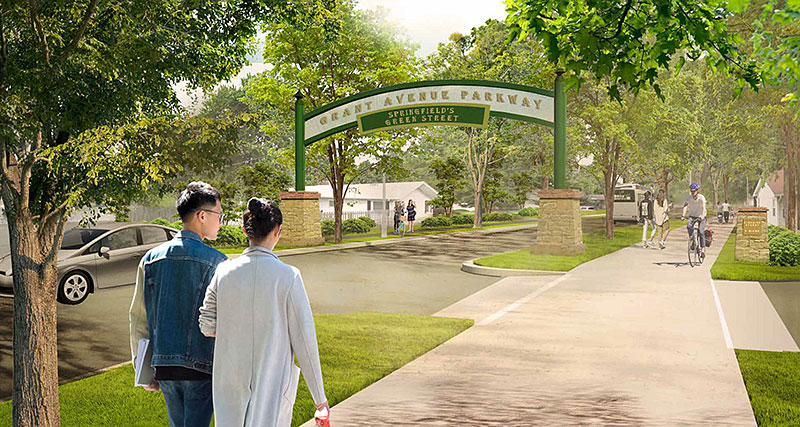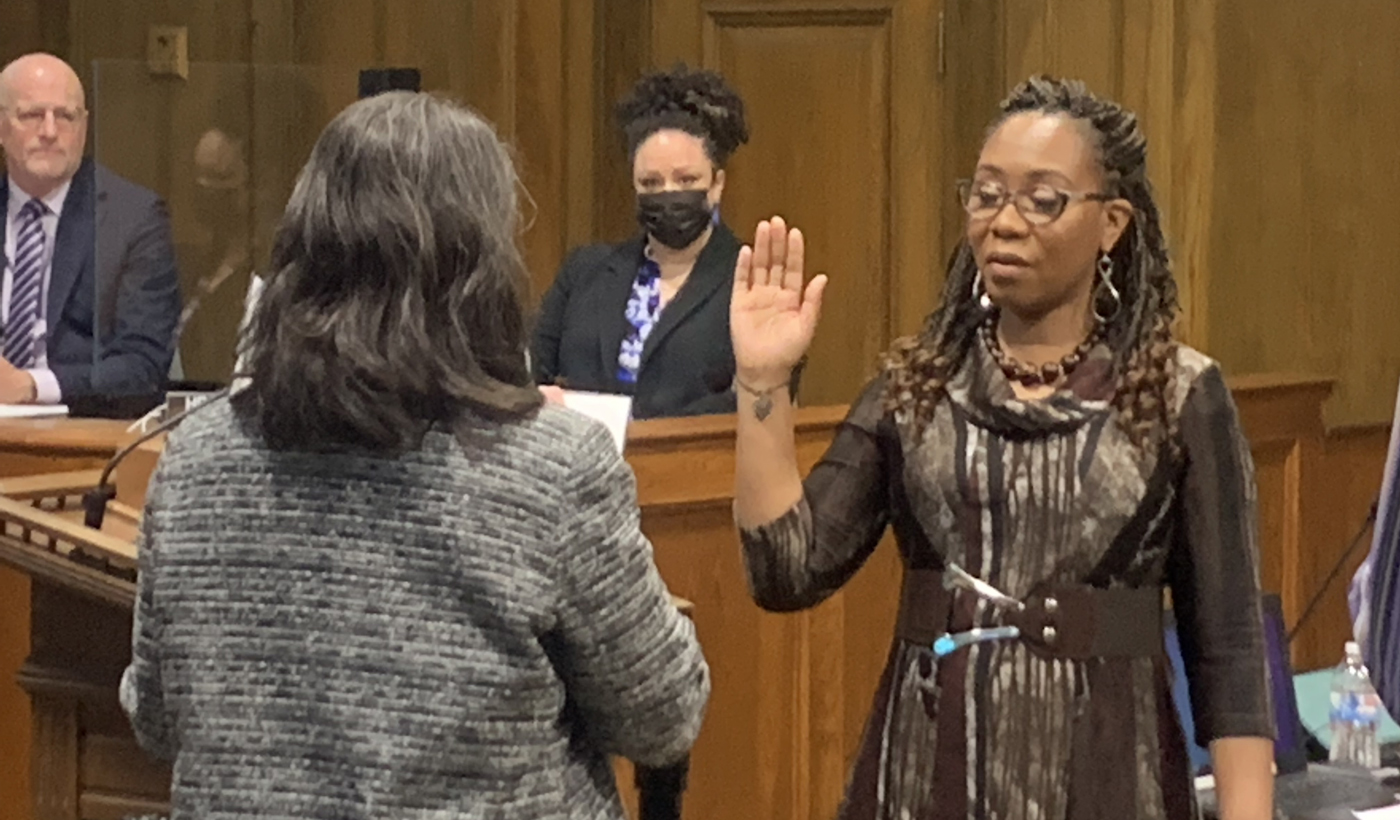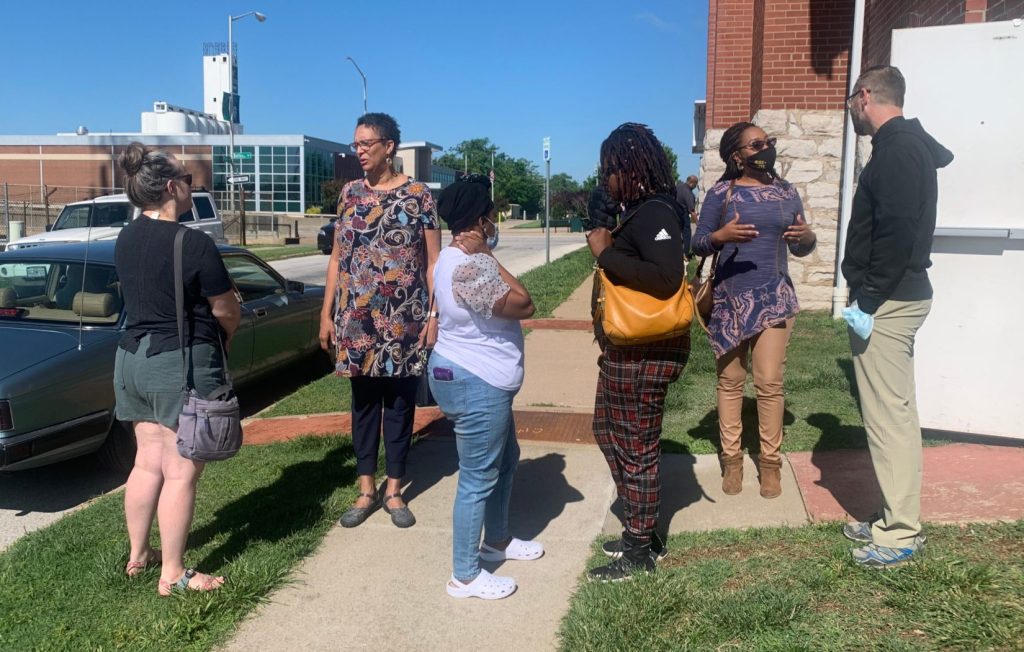Gary Bedell is mad and he doesn’t care if you know it. Matter of fact, he wants you to know. Because if you know he’s seriously upset then maybe you’ll listen to what he’s saying about the future of his hometown.
Bedell is 40 and the embodiment of what city leaders say is a key to a vigorous future. He’s a local who stayed here after school to build a career. He’s an artist. He’s Black.
He’s been keeping track of stories about Springfield’s slowing growth. He knows about the things being done right now to kickstart a revival that will purportedly make Springfield thrive with a “diverse mix of business, industry, attractions, and housing options … (where) companies locating to the area provide high paying jobs that attract applicants from across the state and country.”
Bedell won’t let himself buy into the hype. He knows Springfield. He’s been around long enough to be underwhelmed. To not be surprised when he’s disappointed. That’s part of the reason why he’s mad.
“The people with the pull just play the same game of Pong while the rest of the world is rockin’ the Oculus,” Bedell says. “Springfield doesn’t take risks. It’ll NEVER take risks. It's comfortable. We can’t even build a skyline higher than the Hammons Tower. Shit, we can’t even get a Black radio station.”
Springfield’s new blueprint for the future starts making its mark this summer. After three interrupted years of research, Forward SGF finished a draft of the city’s comprehensive plan, intended to guide Springfield for the next 20 years. The plan went before council this week and “will result in a set of policies that direct future growth and development.”
“I think we have a wave of people right now who are optimistic and see value in this effort in what we’re doing,” says Randall Whitman, a principal planner for the City of Springfield. “They like what we’re doing and are all in.”
The timing is right. The city and surrounding metro continue to grow, but it’s slow — less than one percent a year for most of this century.
What does Springfield need to grow?
In dozens of meetings across the city, citizens talked about what they did and didn’t like about Springfield. Thousands of people offered their wish lists:
We need an entertainment district … increase community gardens … lack of restaurants near airport … better connected transportation for the hot spots in the city … expand expo center into a true convention center … the northside needs help! … Keep in mind that everything we are doing attracts talent and provides positive exposure to potential businesses.
Participants also weren’t shy about voicing their gripes, and many of their complaints about Springfield were universal:
- Brain drain of talented workers
- Lack of diversity and inclusion
- Low wages
- Lack of affordable housing
- Lack of public transportation
- Lack of community identity
It’s tempting to treat the problems in if/then fashion. If Springfield can convince young, educated people to put down roots, then the population will be more diverse. Companies will locate here and wages will go up to meet housing costs. More environmentally conscious people will ride the bus. Everyone will live happily ever after.
Here’s reality. Nearly 1,500 higher-ed students responded to an online Forward SGF questionnaire. Only 29 percent said they were “likely” or “very likely” to live in Springfield after graduation.
The City Council can’t order post-school graduates to stay. Growing Springfield is a long game of persuasion.
“You’ve got to bring the things people like and make them want to stay here,” Bedell says. “For a while, there was a small video game studio boom here and I’d love to see something like that happen again and actually stick. Or a boom of VFX, animation, or movie studios. That can happen. Now imagine that in a college city like Springfield. It’d be amazing!”
It would at least be an identity, something people say we lack.
What is this place, anyway?
Does Springfield, MO have an identity?

Springfield is the Queen City of the Ozarks. The Daily Citizen’s Steve Pokin says the city has held the designation since 1876, when a politician named Sempronius H. “Pony” Boyd used the phrase during a centennial celebration.
“The Queen City” may have seemed golden for Pony Boyd but it doesn’t tell a story. It’s also not exclusive. Sedalia is the “Queen City of the Prairie.”
Springfield has a slogan. Did you know that? “Life’s Simple Pleasures” is the shorthand version of Springfield’s Brand Promise, minted by the Convention & Visitors Bureau in 2015: “As the heart and soul of the Ozarks, our true nature is to help people celebrate friends, family, and all of life’s simple pleasures.”
The CVB has been around since the 1970s — first as the hospitality arm of the Chamber of Commerce, before transitioning into its current status as a nonprofit marketing organization. The city hires the CVB to “promote economic development through travel and tourism.”
Tourism plays a key role in growing the city and region. In theory, once visitors see Springfield — on vacation, during a work convention, attending a sporting event — some of them will want to move here.
Turning those people on to Springfield is the CVB’s job. It’s not as easy as it seems.
The challenge starts with the name — one of the most commonplace names in the United States. There are Springfields in 34 states.
It’s the birthplace of Route 66. But the honorific marks a meeting, not a groundbreaking or ribbon-cutting. Springfield is where the highway’s name was decided. The first stretch of road wasn’t built here, and Springfield isn’t name-checked in the classic song about the Mother Road.
For foodies, Springfield is known for its deep-fried twist on a Chinese-American dish. For celebrity geeks, it’s the Land of Brad. For pop culture, its informal nickname is the area code, which also doubles as street shorthand for methamphetamine.
The CVB launched a “comprehensive branding effort” for Springfield in 2015. The one-line takeaways:
The Vision Statement: “Springfield will be a universally recognized destination, welcoming people to visit, explore, and experience the quality of life we enjoy every day.”
The Positioning Statement: “For those who embrace the virtues of a life well-lived, Springfield, Missouri is the pulse of the Ozarks; a thriving, regional hub for commerce and culture that celebrates hard work, freedom, and homegrown values.”
The “Life’s Simple Pleasures” line — the brand essence, as marketing types like to say — has since been replaced with a call to action for would-be visitors: “Come see us in Springfield. We’ll show you around.”
Convention center and growth
One of the things the CVB would like to show visitors is a convention center. Springfield doesn’t have one, but according to its most recent marketing report, the CVB has a couple of ideas in mind — a redo of the current Expo Center in Jordan Valley Park, or a new convention center at the Bass Pro complex.
As a consultant noted in 2015, the current Expo Center won’t help Springfield grow. It’s actually a drawback: “The Expo Center is not connected to any hotel, as meeting planners demand. It is not connected to any parking facility. which meeting planners request … The Expo Center area is not connected to the downtown area and visitors may not even realize the downtown is so close.”
Moving convention business away from downtown to Bass Pro would be audacious. It would also dovetail with the $26 million Grant Avenue Parkway project, linking downtown to Bass Pro.

(Photo: City of Springfield)
More and better sports facilities are also mentioned in the marketing report, and here there is real progress to report. Last month the Missouri General Assembly approved a plan that sends more than $42 million in federal funds to Greene County. The money will help build a 6,800-seat arena at the Ozark Empire Fairgrounds, and improve several soccer fields at Cooper Park.
Megan Buchbinder, the CVB’s marketing director, acknowledges the need to push the comfortable past. Asked for one word to describe Springfield, Buchbinder says “potential.”
“I feel that there is a real underlying energy around growth and the majority of people are ready for it to happen,” Buchbinder says. “We see other communities and what success looks like for them, but it's time that we truly come together and figure out what a successful growth pattern is for Springfield and truly put our boots on the ground to make those happen.”
Do Springfield residents want the city to grow?

Buchbinder also knows that a lot of people, for a lot of reasons, are afraid of growth and change.
On local social media groups, people who were born and reared here talk about riding bikes along East Bennett and cutting south through the neighborhoods leading to Sunshine Street. They remember when Battlefield Mall opened in 1970. When Republic Road was M Highway, way out in the sticks. To them, growth comes with fears of more crime, more meanness.
Still others are afraid of the Other — people who don't look or talk or act like them.
In 2015, voters in Springfield repealed discrimination protections for the city’s gay, lesbian, bisexual and transgender citizens.
Monica Horton, Springfield's newest city council member, told Springfield News-Leader in April that “ending all forms of legal discrimination against our LGBTQ neighbors” was a way to “make Springfield a more welcoming and inclusive community and a way to attract and retain talent in Springfield.”
In another — more recent — example of “Othering,” Springfield's oldest Black church, Pitts Chapel, was the target of a hate crime in late May.
“That is a tension that you hold as the Black community here in Springfield,” Rev. Tracey Wolff, pastor at Pitts Chapel, told the Daily Citizen at the time. “The tension is, ‘What’s going to happen next?’ And that’s real.”

The Springfield metro area's population is changing. Greene County’s population grew by almost 24,000 people in the past decade, according to the census. The net gain was made up entirely by people of color. The white population fell by 122 people.
Taj Suleyman, the City of Springfield's director of diversity, equity and inclusion, says the community should think of our changing demographics differently.
“Think of all the ingredients in a salad — so many different things to enjoy,” Suleyman says. “We talk about diversity as a melting pot. But you wouldn’t melt a salad. That’s the difference between assimilation and integration.”
Celebrate the differences and recognize they already exist; 90 languages are spoken in Springfield every day, and that number will only grow with time.
If Springfield shakes off its assorted fears. If it’s willing to do more than talk and make plans.
“It’s a challenge to balance the naysayers,” says Whitman, the city planner. “But all input is good input. This is a city of 180,000 people at night, growing to 250,000 during the day. Not everybody can be 100 percent happy all of the time. But we welcome the different perspectives. This is important. The city only does this every 20 years and we want to get it right.”
“Change is hard and uncomfortable and nobody wants to fail,” adds Buchbinder. “I definitely can empathize with the hesitation, but we are not building the Springfield for ourselves. We're making the changes for our kids, their kids … there may be growing pains, but the days of operating out of fear are over. If we want to see big change for our community, we have to take big leaps with the understanding and support that we may trip up from time to time.”
Gary Bedell isn’t tripping about tripping up. He’s ready for the big leaps. “We need the future, now,” he says. “Because we have a lot of catching up to do.”


